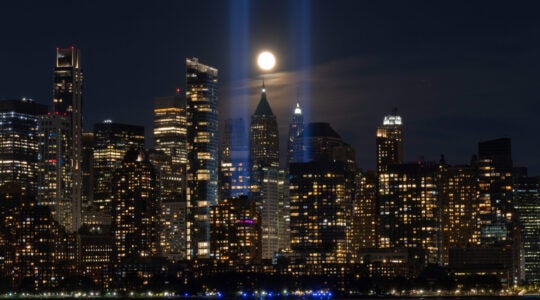It was in a windswept Italian seaside resort 25 years ago that I saw close-up the huddled masses yearning to breathe free.
Tens of thousands of Jews had poured out of the Soviet Union, and American Jewish organizations were there to greet them, house them and help get them to America. With few Italian visitors to the resort during the off-season, the town of Ladispoli became the temporary home to these Americans-in-waiting. Gathered around the fountain in the town square, they traded stories about what they had left behind and exchanged rumors about what lay ahead.
Every day I sat in a bustling villa converted into a temporary office interviewing families about what life was like for Jews in the Soviet Union in order to prepare their applications to come to the U.S. as refugees. How Jews had fared under Communism was well known from the effective international campaign to urge the Soviet Union to allow them to leave. But hearing story after story, day after day, was gut-wrenching. Looking directly into faces of people who told of bullying in schools, lost careers, careers cut short and the near absence of Jewish traditions brought home just what life had really been like for them.
Even so, leaving behind one’s home and all that was familiar was not easy. For many adults it would mean never again working in their profession and never again being truly comfortable in a new language and a new culture.
The American government was there, too, in the form of the imposing U.S. Embassy in the center of Rome where U.S. immigration officers sat in cramped windowless offices processing the applications, one by one, sending the Soviet Jews on their way to America.
A few years later, I would get my own U.S. citizenship — not as a refugee but as an immigrant — a Jew from a tiny shrinking community coming to live in a dynamic thriving one. There are probably more Jews on my block on the Upper West Side than there are today in the whole of Ireland where I grew up.
Watching a large contingent of children of former Soviet Jews marching down Fifth Avenue in bright yellow T-shirts at the Israel Day Parade a few years ago was a stark reminder of what immigration has done for this country and for this Jewish community. They are a generation that grew up never experiencing the hardship of life in the Soviet Union. They have opportunities of which their parents could not even dream. And thousands of Jews from Muslim countries also came to the United States in recent decades with help from the American Jewish community and have built thriving Jewish communities in their new country.
More than 15 percent of Jews in the New York area today live in Russian-speaking households. Despite the challenges of poverty and assimilation, they are increasingly involved in Jewish life and are certainly destined to be a significant element in the fabric of our community in the future.
One hundred and fifty years ago there were about 200,000 Jews in America. Today there are over 6.5 million. The exponential growth in the American Jewish community is a result of the influx of immigrants and refugees during that period and the descendants of those new arrivals.
So, yes, immigration is a Jewish issue. Not just because it is something we should care about as Americans, not just because Jewish values call upon us to welcome the stranger but because immigration has made and strengthened this Jewish community. It has brought energy, passion and diversity to the Jewish community and to the country.
And we have seen the other side of immigration, too. The gates closed in 1939 to the passengers of the ship, the St. Louis, seeking to escape from Germany and the impending Holocaust and countless other Jews during the Holocaust effectively condemned them to death. How many could have escaped and what contribution could have been made to this country had Jews been allowed to come in significant numbers before the Holocaust and not just after the destruction? And if they had, what would our community look like today?
During Sukkot, we invite to the sukkah “ushpizin” (Aramaic for guests), spiritual figures from among our ancestors. The tradition of hospitality to guests goes back a long way. Avraham, the first patriarch and the first of the ushpizin, was known for his hospitality. He would await the opportunity to invite travelers into his tent for food and respite.
Over the past year or so we have witnessed a heated debate over immigration policy in this country. The flood of unaccompanied minors crossing the border to Texas this summer brought the issue into even sharper relief.
Our community’s history in regards to immigration does not mean that we should advocate that everyone who wants to come to America should be entitled to come, and that the floodgates should be thrown open. But it does mean that we owe it to those who seek to come to this country to care about the issue and to try to be part of solutions that do justice to what America is and can be.
Just because we can’t do everything, doesn’t mean that we should do nothing.
Gideon Taylor is a former Jewish communal professional now working in the private sector.
The New York Jewish Week brings you the stories behind the headlines, keeping you connected to Jewish life in New York. Help sustain the reporting you trust by donating today.





